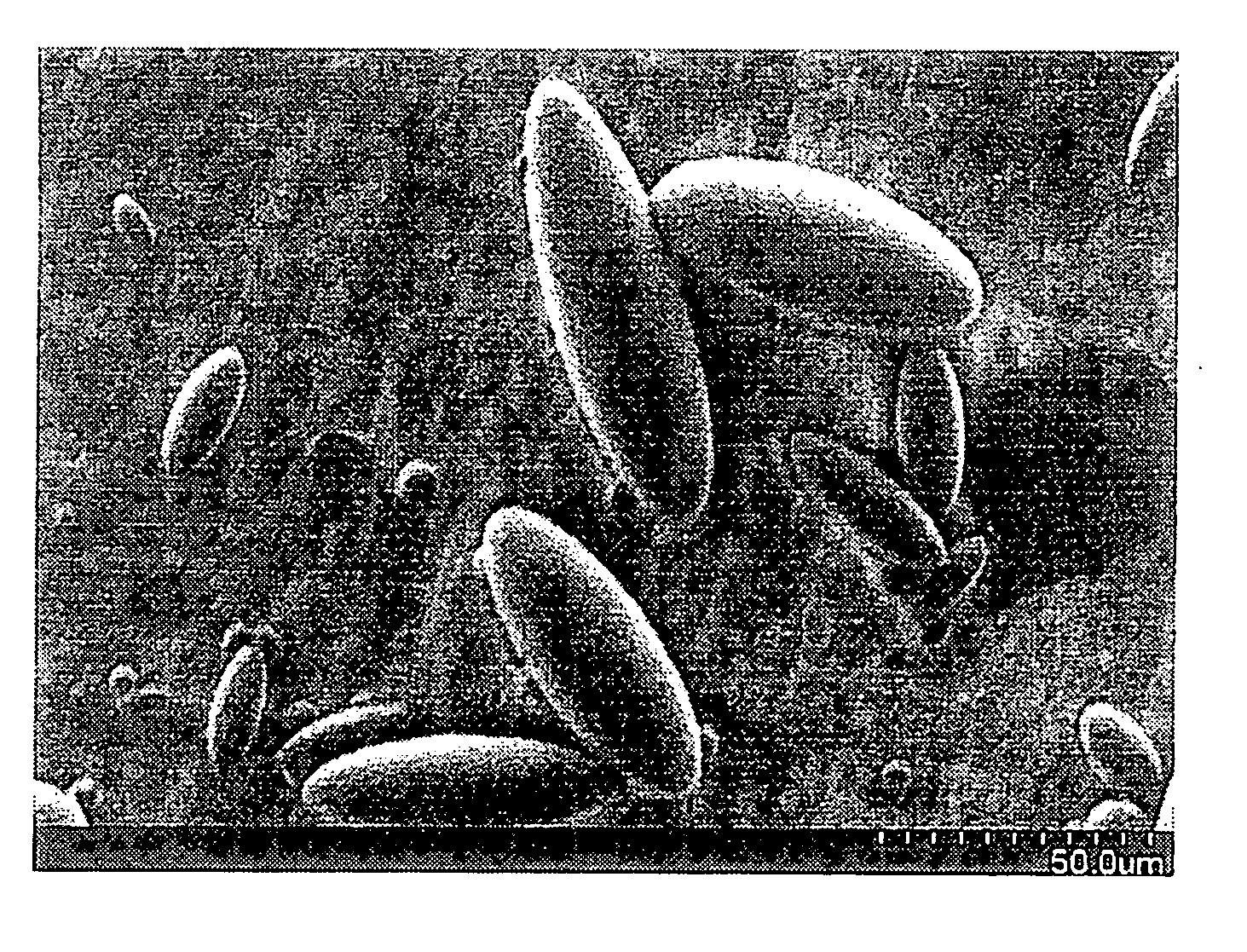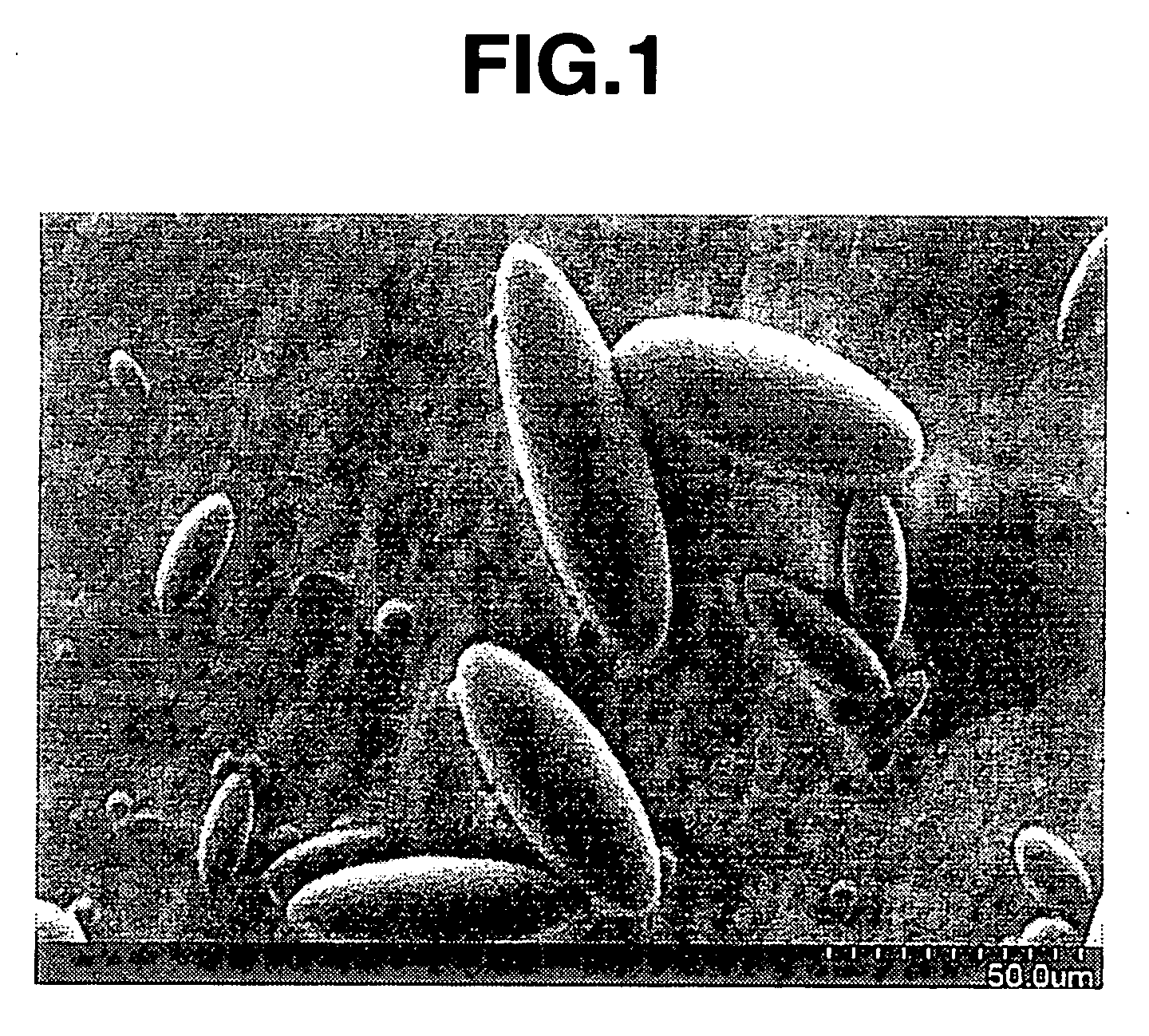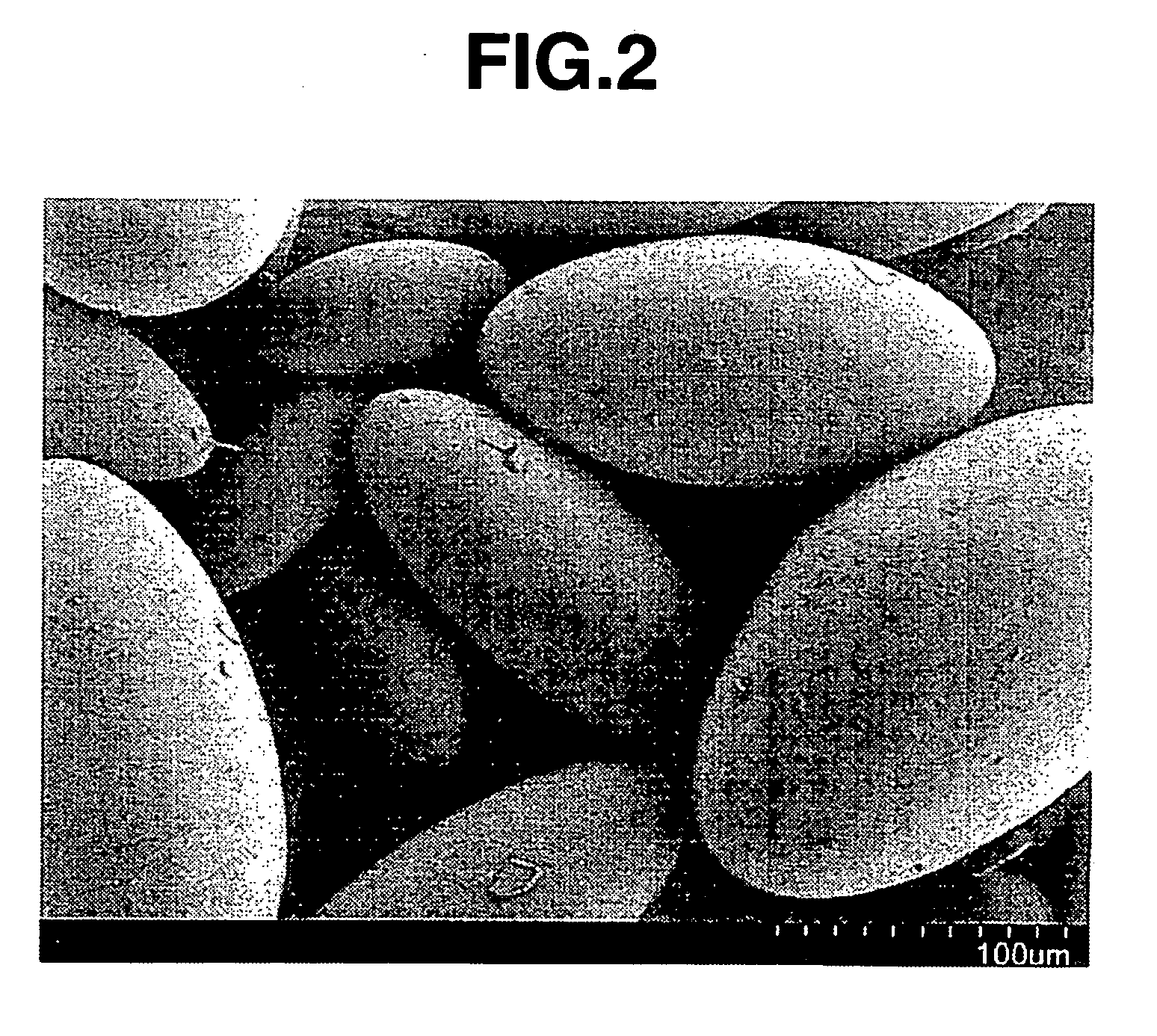Oval-spherical organic polymer particle and process for producing the same
a polymer particle and organic polymer technology, applied in the field of oval-spherical organic polymer particles, can solve the problems of difficult to achieve micron-scale particle size, difficult to uniformly disperse, and difficult to produce micron-sized particles, and achieve high light-transmitting ability, high aspect ratio, and high light-diffusion ability.
- Summary
- Abstract
- Description
- Claims
- Application Information
AI Technical Summary
Benefits of technology
Problems solved by technology
Method used
Image
Examples
example 1
[0116] The compounds shown below were mixed in the indicated proportions and the resulting mixture was added all at once to a 300 ml flask. Dissolved oxygen in the mixture was displaced with nitrogen, following which the flask contents were heated at an oil bath temperature of 65° C. for about 15 hours under stirring and a stream of nitrogen to give a styrene-sodium p-styrenesulfonate copolymer particle solution.
Styrene28.9 gSodium p-styrenesulfonate 7.2 gMethanol82.8 gWater55.2 gAzobisisobutyronitrile (AIBN) 1.0 gPolyvinyl pyrrolidone (K-30)15.0 g
[0117] Next, this particle solution was repeatedly washed and filtered three to five times with a water-methanol mixed solution (weight ratio, 3:7) using a known suction filtration apparatus, then vacuum dried, yielding oval-spherical organic polymer particles.
[0118] One hundred of the resulting particles were randomly sampled and their shapes examined under a scanning electron microscope, from which it was confirmed that they were oval...
example 2
[0119] A mixture in the below-indicated proportions was added all at once to a 300 ml flask. Dissolved oxygen in the mixture was displaced with nitrogen, following which the contents were heated at an oil bath temperature of 65° C. for about 15 hours under stirring and a stream of nitrogen to give a styrene-sodium p-styrenesulfonate copolymer particle solution.
Styrene28.9 gSodium p-styrenesulfonate 7.2 gMethanol82.8 gWater55.2 gAzobisisobutyronitrile (AIBN) 1.0 gPolyvinyl pyrrolidone (K-90)15.0 g
[0120] The particle solution was washed, filtered and dried in the same way as in Example 1. Next, 100 of the resulting particles were randomly sampled and their shapes examined under a scanning electron microscope, from which it was confirmed that they were oval-spherical organic polymer particles having a major axis with an average value L1 of 15 μm and a single continuous curved surface. The aspect ratio P1 had an average value P1a of 3.2 and a degree of variation A of 15.1. The average...
example 3
[0121] Aside from using sodium methacryloyloxyethylsulfonate instead of sodium p-styrenesulfonate, a styrene-sodium methacryloyloxyethylsulfonate copolymer particle solution was obtained in the same way as in Example 1.
[0122] The particle solution was washed, filtered and dried in the same way as in Example 1. Next, 100 of the resulting particles were randomly sampled and their shapes examined under a scanning electron microscope, from which it was confirmed that they were oval-spherical organic polymer particles having a major axis L1 with an average value of 125 μm and a single continuous curved surface. The aspect ratio P1 had an average value P1a of 2.3 and a degree of variation A of 14.7. The average index of spheroidization Q1a was 0.97. FIG. 2 shows a scanning electron micrograph of the oval-spherical organic polymer particles thus obtained.
PUM
| Property | Measurement | Unit |
|---|---|---|
| Fraction | aaaaa | aaaaa |
| Fraction | aaaaa | aaaaa |
| Fraction | aaaaa | aaaaa |
Abstract
Description
Claims
Application Information
 Login to View More
Login to View More - R&D
- Intellectual Property
- Life Sciences
- Materials
- Tech Scout
- Unparalleled Data Quality
- Higher Quality Content
- 60% Fewer Hallucinations
Browse by: Latest US Patents, China's latest patents, Technical Efficacy Thesaurus, Application Domain, Technology Topic, Popular Technical Reports.
© 2025 PatSnap. All rights reserved.Legal|Privacy policy|Modern Slavery Act Transparency Statement|Sitemap|About US| Contact US: help@patsnap.com



